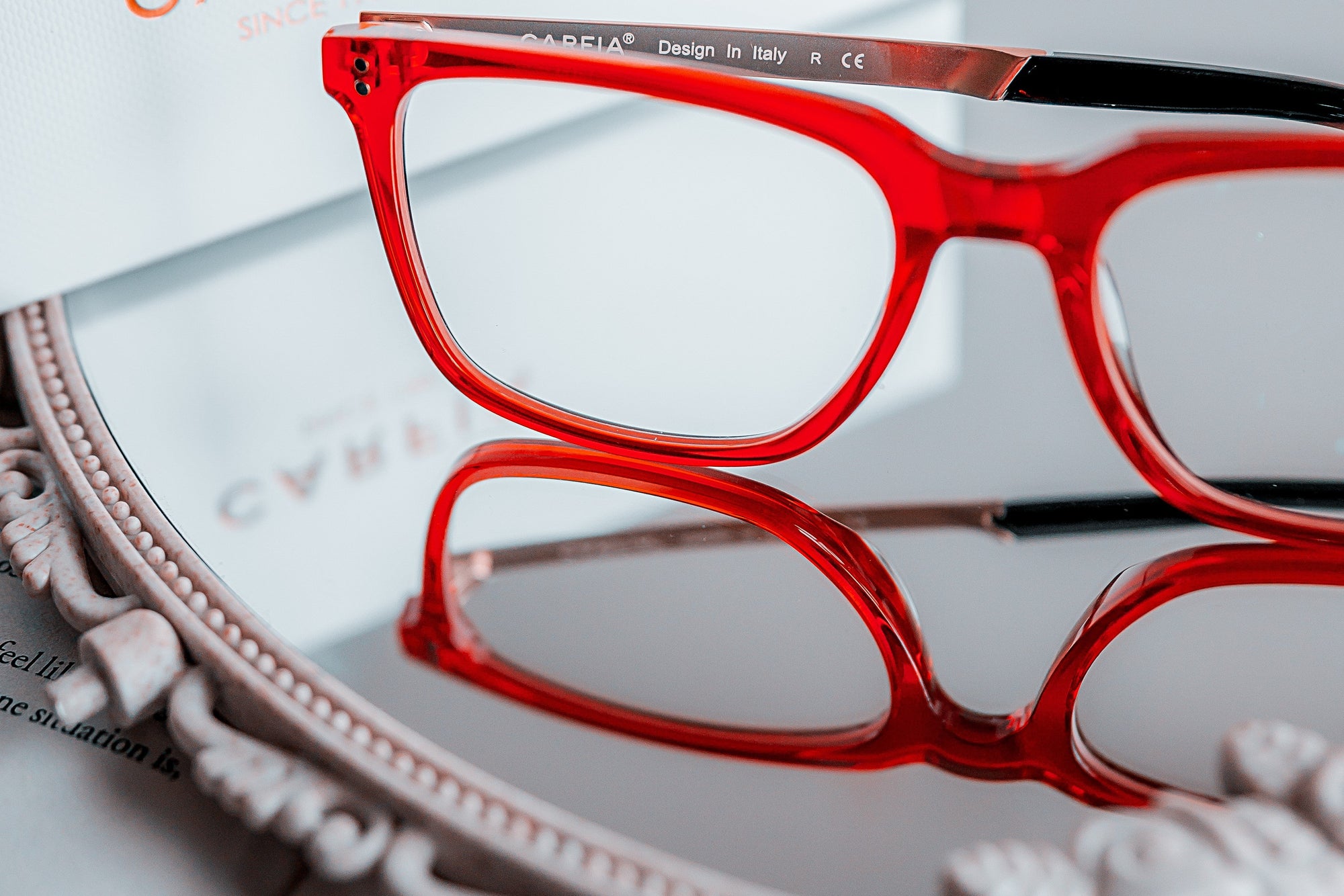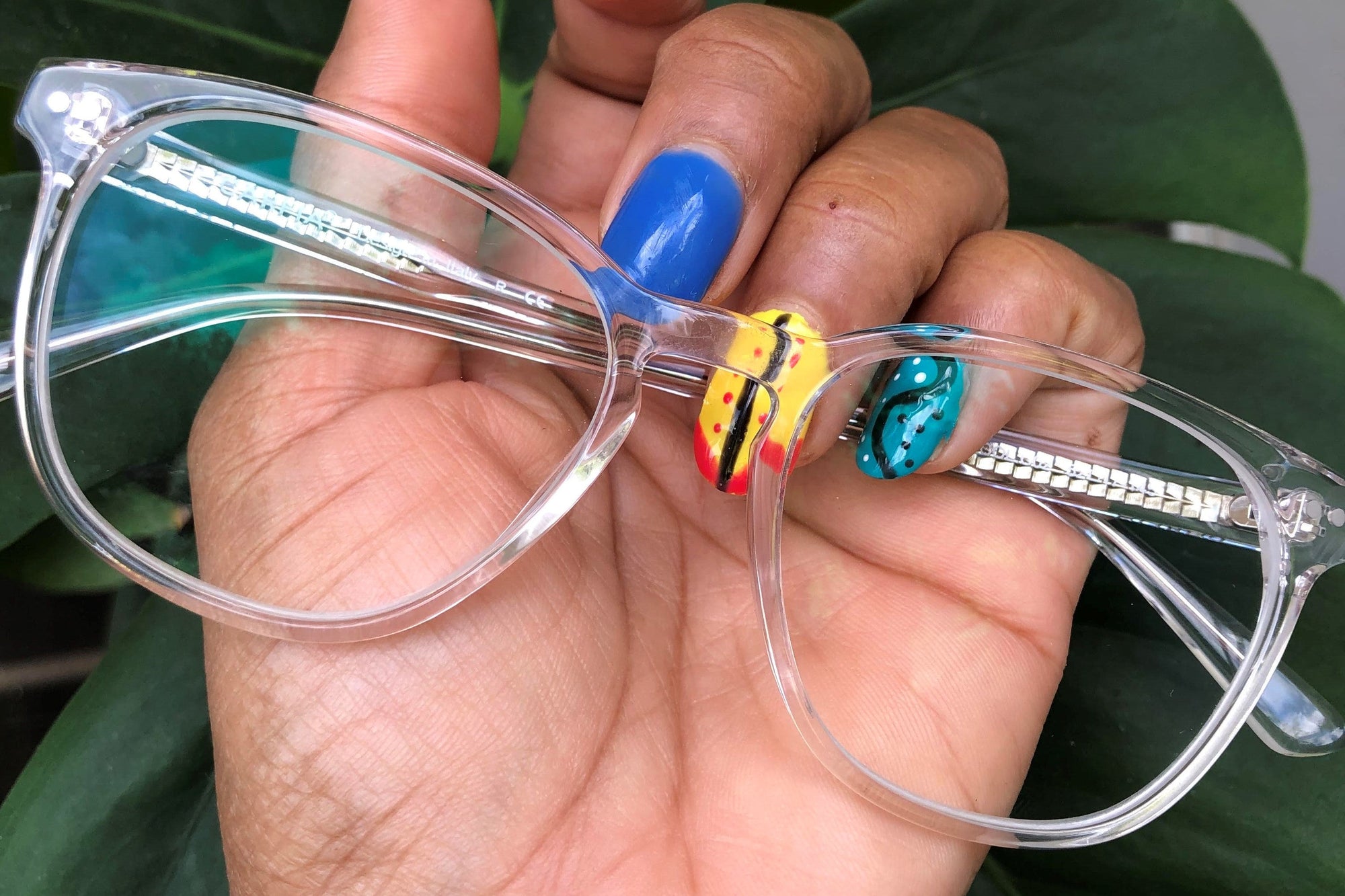What Is Progressive Lens?
Progressive lenses, also called multifocal lenses, have three prescriptions in one pair of glasses. So, it allows you to see near, middle distance, and far objects without changing your glasses. The progressive lenses are designed for people who are over 40 years old who are both nearsighted and farsighted. The progressive lenses come with the following features:
- There is no distinct line between all visions(near, intermediate, and far).
- Most popular lens for anyone with presbyopia who wears
- Expanded intermediate zone for better computer vision.
From the above information, you may have known the differences between bifocal lenses and progressive lenses. As for progressive vs bifocal lenses, which one is better? It is difficult to judge because each of them has unique features. So, if you do not know choose which, you can listen to the eye doctor.
The working principle of driving glasses
The driving glasses are designed according to the polarized angle and radian of the lens and the principle of precision optics. It can only let the beneficial light pass through, and other light sources, like strong sunlight, car headlights, and other light sources are filtered, to eliminate the interference of external light, and avoid the appearance of eye-catching, dazzling, and other situations. That's basically how the driver glasses are designed.
About industrial pure titanium
For the industrial pure titanium, titanium content is not less than 98%, containing a small amount of oxygen, nitrogen, hydrogen, carbon, silicon, and iron impurities such as dense metal. The labels are TA1,TA2,TA3,TA4. It's arranged by more and more impurities. The TA1 titanium content is more than 99.5%, and the price is not high. But no matter which links, for molding, welding, polishing, processing difficulty is very great.The price of almost all titanium alloys in the national standard is higher than that of pure titanium.
In reality, the price of β titanium is higher than pure titanium. Pure titanium is almost no elastic, but β titanium is not only elastic, and has the advantages of ultra-light corrosion resistance. β titanium does not have a specific composition. Memory titanium can cost tens or even tens of times as much as pure titanium.
Using memory alloy to make glasses frame is the use of its superelastic characteristics at a certain temperature (elasticity is several times that of stainless steel) and did not use its memory function. Compared to beta-titanium, memory titanium is so difficult to process. It is so elastic that shaping is difficult and impossible at room temperature, and memory titanium heat treatment is another difficult and even secret process.
How to Keep Glasses from Slipping
Stick-on Nose Pads
Nose pads would be a good choice to prevent glasses to slide down your nose. Hence, you can stick a pair of rubber pieces in the nose pads of your glasses or you can choose a pair of glasses with rubberized nose pads. If you want to try a pair of nose pads glasses, the Koalaeye Optical may be a good choice. The rubber nose pads will make you feel steadier and better and the additional resistance on the nose pad will surely provide more support. So, if your glasses often slip down from your nose, try this way.
Wax Coating
To keep glasses from slipping, you can try wax coating which is a smart move. Use the wax on your nose pad area along with the temple where the glasses come into contact with the skin. In general, it works fine and it is nearly invisible.
Temple Ear Hook
The temple ear hook is a good way to keep glasses from slipping. It can provide mechanical support behind the ear and you will feel the support from the back of your ears. But the drawback of the temple ear hook is that it is quite visible. When you take off the lenses, you need to lift the temple higher so that the ear hook could clear the ear’s crest. Besides, the cheaper one might cause some discomfort to the back of your ears because of the pressure.
Rubber Bands and Hair Ties
To keep glasses from slipping, you can also try hair ties and rubber bands. You can tie one around the temple tip behind your ear so that it can provide both slight mechanical support and friction forbidding your glasses from moving around. What’s more, this is a low-cost method.
Sunglasses for Fishing under $50 - GangShiDun
GangShiDun eyewear brand focuses on driving eyewear, fishing eyewear, fashion eyewear, polarized and discolored eyewear, anti-blue eyewear, and other functional eyewear. Adhering to the brand concept of fashion, light luxury, and cost-effectiveness, they are committed to creating their unique brand style. They have high-cost performance. GangShiDun fishing glasses have a photochromic function, which can automatically change the degrees of the color according to the strength of the sun.
What Are the Disadvantages of Progressive Lenses?
In this section, we will show you some progressive lenses disadvantages.
1. You must learn how to see through the lens. Since there is no visible line in progressive lenses, you may need one or two weeks to learn the correct way to look through the lens.
2. Temporary vision distortions. The lower part of a progressive lens is magnified since it is designed for reading. So, when you look downward when stepping off a curb or walking upstairs, your feet may appear larger through the progressive lens so that it is difficult for you to gauge your step.
3. Progressive lenses are expensive than traditional glasses. So, when you purchasing the progressive lenses, you can compare several different optical stores. In addition, Koalaeye Optical, a professional glasses provider, offers various glasses including cheap progressive lenses, sunglasses, blue light glasses, and so on. Besides, it provides the free shipping service.
The production process of titanium frames is complicated.
The production of titanium frames requires special processing equipment, special welding technology, and electroplating technology, which has many processing procedures and high production costs. In particular, some glasses choose the most difficult pure titanium andβtitanium. Titanium is very soft and very sticky, and very lively at high temperatures,so the processing is very difficult.











































